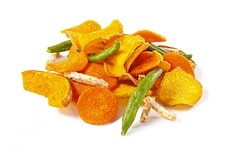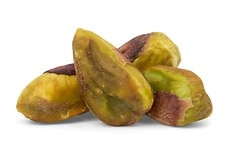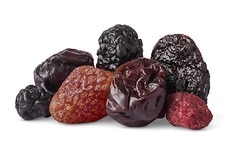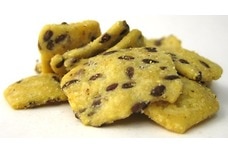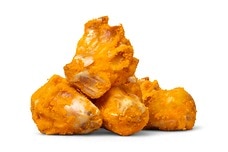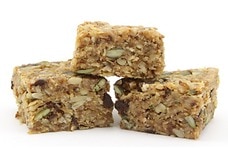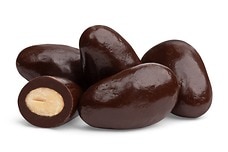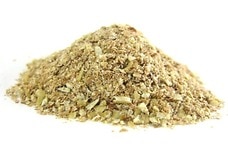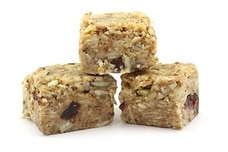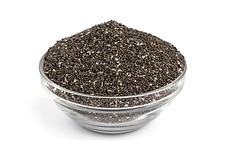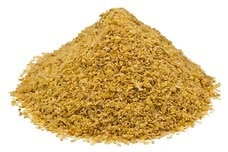High Fiber Foods
Many diet plans tout the benefits of fiber. Although fiber forms part of a healthy diet, it is actually the indigestible part of a plant. Boosting your fiber intake is associated with numerous health benefits, making it important to ensure you get enough.
What Is Fiber?
Technically, dietary fiber is a type of carbohydrate. However, unlike the sugars and starches we usually envision when we think of carbohydrates, fiber is not digested by the human body. It is the portion of plants that contains cellulose and non-starch carbohydrates, which our bodies do not break down for energy. Dietary fiber is not a single type of molecule; rather, it is a class of molecules that share a similar chemical composition.
The Role of Fiber in the Human Body
Dietary fiber is also known as plant roughage. As fiber passes through the gastrointestinal tract, it undergoes certain changes despite not being metabolized (Brown et al., 1999). For example, fiber molecules may bind to bile acids or sugars while passing through the gastrointestinal system. Fiber also adds bulk to the stool and softens it, which normalizes bowel movements.
Soluble versus Insoluble Fiber
There are two primary forms of dietary fiber: soluble and insoluble (Mayo Clinic, 2015). Soluble fiber dissolves in water, creating a gel-like material. Fruits, vegetables, and oats are sources of soluble fiber. Soluble fiber is also associated with many of the health benefits of a high fiber diet, such as lowering cholesterol levels and stabilizing blood glucose.
By contrast, insoluble fiber cannot dissolve in water. This form of fiber adds bulk to the stool and pushes waste through the intestines to help the body eliminate waste. Whole-wheat products, beans, and certain vegetables are good sources of insoluble fiber. Getting enough insoluble fiber promotes gastrointestinal regularity. Both soluble and insoluble fiber are necessary parts of a healthy diet.
Choosing Foods High in Fiber
Most Americans do not get enough fiber each day (Vorvick, 2014). It is recommended that healthy men younger than age 50 consume 38 grams per day, while women under age 50 should consume 25 grams daily. After the age of 50, fiber needs decrease. Men older than 50 should aim for 30 grams per day, while women need 21 grams daily.
The best sources of fiber include whole grain products, fruits, vegetables, beans, nuts, and seeds (Mayo Clinic, 2015). Whole grain products may include brown rice, bulgur wheat, old fashioned oatmeal, whole-grain pasta, buckwheat, farro, or amaranth. Enriched versions of these grains strip them of the outer layer (the “bran”), which significantly decreases fiber content. Thus, opt for whole wheat or whole grain versions of the products whenever possible. When eating fruits and vegetables, leave the skins on before eating. Fruits and vegetables with the skins on are good sources of soluble and insoluble fiber.
Keep in mind that although fiber supplements are available, it is best to get natural fiber from the foods you eat. Natural fiber sources contain other vitamins, minerals, and nutrients that support health. Choosing high fiber snacks throughout the day is a good way to ensure you meet your daily target.
Health Benefits of a High Fiber Diet
Eating a high fiber diet has several health benefits. Consumption of soluble fiber is associated with lower cholesterol levels, better blood sugar regulation, and decreased risk of cardiovascular disease (Pereira, 2004). Additionally, fiber is good for the gastrointestinal system. Not only does getting plenty of dietary fiber improve gastrointestinal regularity, but it may also prevent diverticular disease in the colon (Mayo Clinic, 2015).
Fiber can also help you lose weight. Fiber-rich foods make you feel fuller for longer, decreasing cravings that interrupt your healthy food choices. One quick reminder, however, when increasing the fiber in your eating routine, it is important to drink plenty of water to prevent digestive distress.
High Fiber Recipes
Adding fiber to your diet is surprisingly simple when you know which foods contain it. But to make it even easier, we’ve compiled a list of our recipes that contain a plentiful source of the carbohydrate.
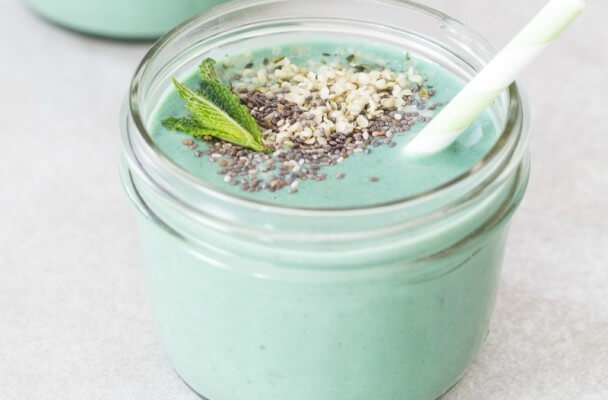
Protein-Packed Detox Smoothie Recipe {vegan}
The real question is not how much fiber this blended beverage contains, but, rather, what doesn’t this superb smoothie supply? This delicious drink offers not only 10 grams of fiber, but also 19 grams of protein, 46% of the Daily Value (DV) for iron, 71% of the DV for calcium, 20% of the DV for potassium, and more than 100% of the DV for vitamin A!
Ingredients: Almond milk, frozen banana, spirulina, hemp protein powder (optional), fresh mint, chia seeds, hemp hearts.
Total Time: 5 minutes
| Yield: 2 servings
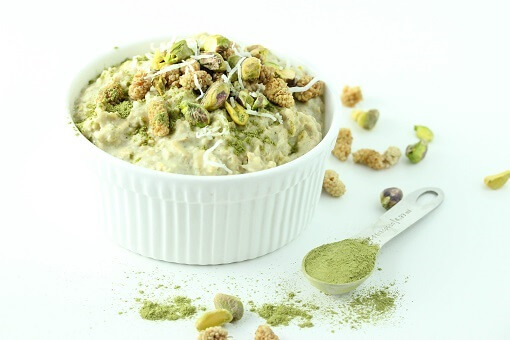
Moringa Oatmeal Recipe
A brilliant way to start the day, oatmeal is known as a great source of fiber in its own right; but, the addition of the superfood moringa powder also provides a rich blend of nutrients that creates an incomparably impressive morning meal. Pistachios also add an interesting flavor and nutritive value, resulting in a bowl that contains an impressive 12.5 grams of fiber, among an abundance of vitamins and minerals.
Ingredients: Gluten-free rolled oats, almond milk, agave or maple syrup, vanilla extract, moringa powder, pistachios, dried mulberries, unsweetened shredded coconut, chia seeds.
Total Time: 10 minutes
| Yield: 4 servings
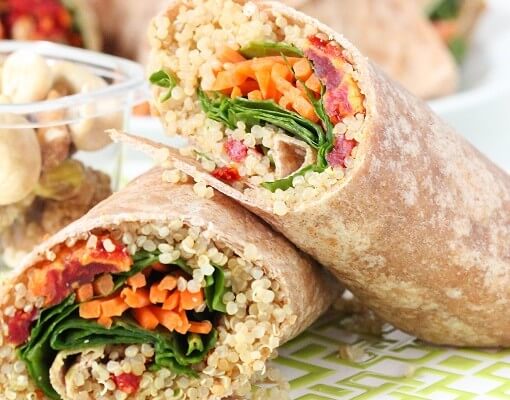
Quinoa Veggie Wrap Recipe {vegan}
A delectable finger food for parties or a simple snack you can pack in any tupperware you prefer, these simple wraps are easy to make and taste great. Each wrap contains more than 11 grams of fiber to support your digestive health. But the wraps also contain an abundance of protein, vitamin A, iron, and starches to keep you energized and healthy with a low-fat treat.
Ingredients: Tortilla wraps, quinoa, hummus, fresh spinach, sun-tomatoes, shredded carrots.
Total Time: 30 minutes
| Yield: 4 wraps
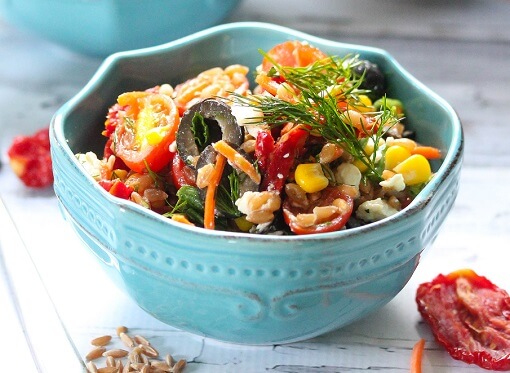
Farro Vegetable Salad Recipe
Another recipe that utilizes a superfood seed among other ingredients to supply plenty of fiber, protein, and other nutrients is this delectable Mediterranean salad. Utilizing the flavorful farro, this dish offers an impressive helping of nutrients with 14 grams of fiber, 16 grams of protein, and more than 20% of the DV for vitamin A and C, calcium, potassium, and iron.
Ingredients: Organic farro, sun dried tomatoes, frozen corn (thawed), scallions, black olives, feta cheese, cherry tomatoes, shredded carrots, salt, fresh dill, fresh mint, extra virgin olive oil, balsamic vinegar.
Total Time: 1 hour
| Yield: 6 servings
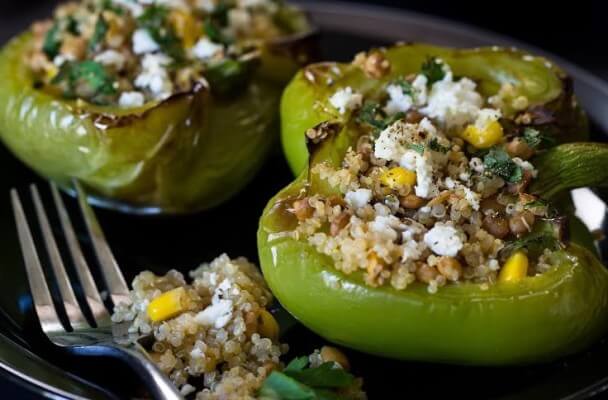
Quinoa Stuffed Peppers Recipe {gluten-free}
Palatable peppers provides a perfect place to put a preponderance of healthful foods, and those selected for this plate also serve a healthful and filling helping of fiber. Quinoa, lentils and spinach add a unique array of nutrients to the mix and in the end, more than 27 of grams of fiber is only one of the perks to this palatable plate- as are 30 grams of protein and more than 100% of the DV for vitamin C- all in a single serving!
Ingredients: Quinoa, green bell peppers, canned lentils, fresh spinach, feta cheese, frozen corn (thawed), salt, black pepper.
Total Time: 40 minutes
| Yield: 6 servings (8 half-peppers)
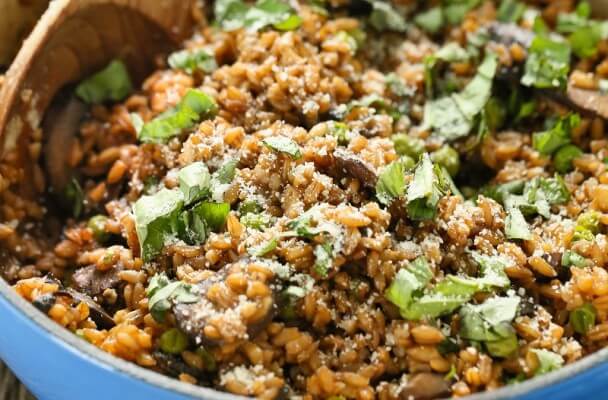
Farro Risotto with Mushrooms Recipe
Another delectable dinner dish, this plate packs fibrous grains, legumes and fungi into one mouthwatering meal. Each bite of this dish serves a superbly rich palate, complete with the soft savor of parmesan and subtle notes of basil. The decadent dish offers more than 9 grams of fiber, but the real prize is its impressive 19 grams of protein. Serve this dish at your next dinner party or create a culinary treat for your family at home!
Ingredients: Organic pearled farro, sliced mushrooms, garlic cloves, extra virgin olive oil, frozen peas, salt, fresh basil, parmesan cheese, hot water.
Total Time: 1 hour, 15 minutes
| Yield: 6 servings
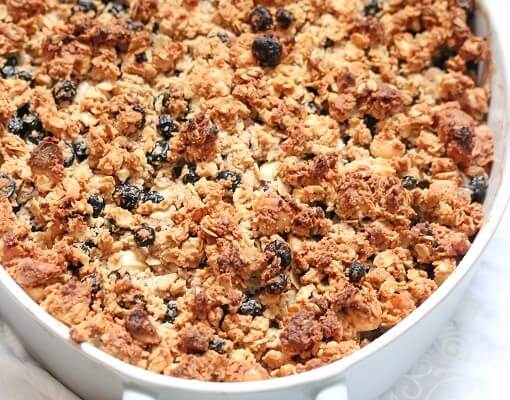
Gluten-free Apple Crisp Recipe
A toothsome dessert that will have your mouth watering (and your bowel moving) this superb apple crisp acts as a rich repository of fiber to care for your digestive tract with each delicious bite. The apples and berries in each bite contribute to the 5 grams of fiber per serving whilst also adding some vitamins, minerals, and antioxidants to the mix in a saccharine plate that is simply scrumptious.
Ingredients: Apples, arrowroot powder or cornstarch, lemon juice, gluten-free rolled oats, almond flour, dried blueberries, macadamia nut pieces, maple syrup, coconut oil, cinnamon powder, vanilla extract, salt.
Total Time: 1 hour
| Yield: 10 servings
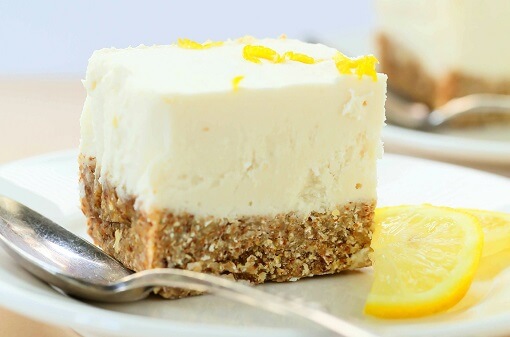
No-Bake Lemon Cheesecake Bites Recipe {luten-free, vegan}
Another delectable dessert with a little over five grams of fiber included in every serving, these sweets also supply a sour savor to create a tart taste you’ll love. Each palatable piece of this flavorful cake also offers a surprising five grams of protein to act in conjunction with the fiber to fill you up and help limit any overly-indulgent sweet teeth.
Ingredients: Raw almonds, unsweetened shredded coconut, gluten-free rolled oats, flaxseed meal, maple syrup, lemons, coconut cream, macadamia nuts, slivered almonds.
Total Time: 20 minutes
| Yield: 15 servings
Healthy Foods that are Full of Fiber
Selecting the right snacks is a great way to add fiber to your diet, but it’s also important to ensure your sources of the carb supply other valuable nutrients as well. These foods were selected to provide healthy sources of fiber, some are snacks that can be eaten alone and some (e.g. chia seeds, ground golden flax) added to recipes to boost fiber and offer vitamins, minerals, and more.
Healthy Eating
- Healthy Snacks
- Healthy Highlights
- 5 Uses for Cacao Powder
- 5 Ways to Eat Farro
- 6 Best Gluten-Free Foods
- Alcohol and the Body
- Almond Flour Recipes
- Anti-Aging Superfoods
- Beat the Afternoon Slump
- Benefits of a Plant-Based Diet
- Benefits of Baobab
- Benefits of Cashews
- Benefits of Coconut Oil for Hair
- Benefits of Coconuts
- Benefits of Dates
- Benefits of Fenugreek
- Benefits of Garcinia Cambogia
- Benefits of Goji Berries
- Benefits of Kale Chips
- Benefits of Monk Fruit Sweetener
- Benefits of Peanuts
- Benefits of Pecans
- Benefits of Pistachios
- Benefits of Pumpkin Seeds
- Benefits of Spelt Flour
- Benefits of Steel Cut Oats
- Benefits of Sunflower Seeds
- Benefits of Tiger Nuts
- Benefits of Turmeric
- Benefits of Walnuts
- Benefits of Wheatgrass
- Best Food Fads
- Cacao vs Cocoa
- Caffeine-Free Energy Foods
- Chocolate That's Good for You
- Diet vs. Exercise
- Fat Burning Foods
- Food Myths Debunked
- Foods for Bone Density
- Foods for Colon Health
- Foods for Healthy Hair
- Foods for Healthy Skin
- Foods to Help Sleep
- Foods to Reduce Stress
- Green Tea Benefits
- Healthy Baking Flours
- Heart Healthy Habits
- High Protein Health Risks
- How to Boost Your Metabolism
- How to Lose Weight While Aging
- How to Throw a Vegan BBQ
- Kaniwa vs Quinoa
- Little Health Foods
- Low-Carb: Fad or Friend?
- Making Healthier Desserts
- Mediterranean Diet Meal Plan
- Natural Beauty Products
- Nuts for Weight Loss
- Preparing Vegan Meals
- Preventing Muscle Degeneration
- Rare Superfoods
- Reduce Sugar Intake
- Save Time By Going Vegan
- Smarter Snack Swaps
- Smoothie Ingredients
- Soy Protein vs Whey Protein
- Starting a Plant-Based Diet
- Steel Cut vs Rolled Oats
- Sugar Substitutes
- Vegan Proteins
- Vegan Substitutions for Fall Recipes
- Why Go Vegan
- Healthy Meals
- Healthy Recipes
- Sports Nutrition
- Vitamins, Minerals & Nutrients

